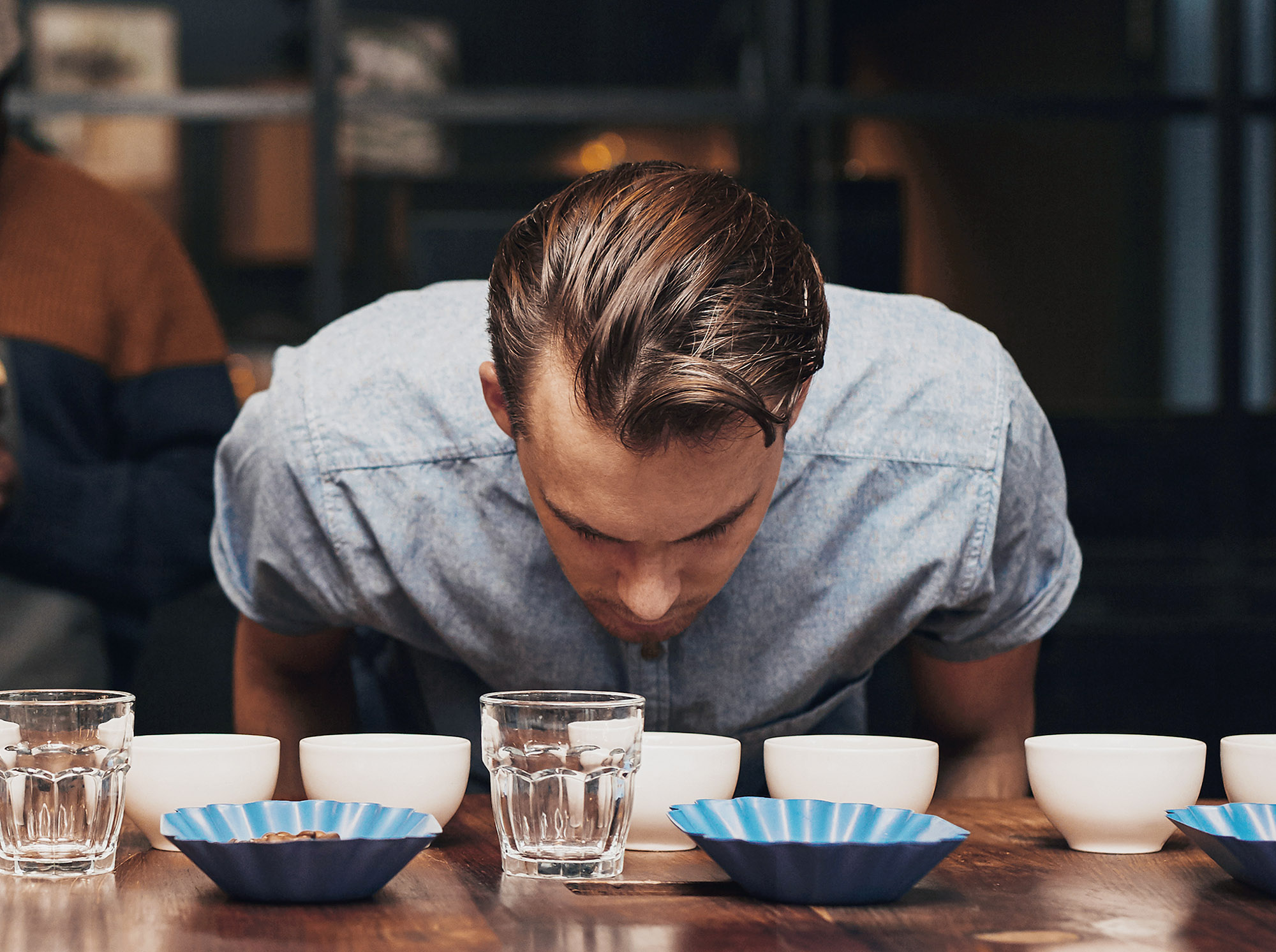Aroma
‘Aroma’ refers to what can be perceived by the olfactory system, which in coffee consists of at least 700 different volatile components, as we learned in Lesson 3.01. In The Coffee Cupper’s Handbook, Ted Lingle identifies four times at which coffee aroma may be perceived: in the smell of the dry grounds, in the smell of the wetted coffee during brewing or before drinking, in the aromas that reach the olfactory system during tasting (via retronasal olfaction), and in the aromas perceived after the evaluator swallows.
The aroma category in most cupping forms encompasses only the first two of these — the smell of the dry coffee, often called ‘fragrance’, and the smell of the wetted coffee or the final brew, referred to as ‘aroma’. Sometimes the latter is called ‘wet aroma’ to make the distinction clear.
In a cupping, the wet aroma is typically evaluated at or just after breaking the crust. Lingle recommends smelling the aroma from the foam running off the back of the spoon after stirring; if you’re not breaking the crust yourself, then the next best option is to get a close sniff as soon as possible after the crust has been broken.
The aromas perceived during and after tasting are usually evaluated as part of the ‘flavour’ and ‘aftertaste’ attributes, which also include taste sensations. The brain tends to perceive aroma and taste together, and it combines the sensations to create a flavour impression.
According to Lingle, the polarity and volatility of aroma molecules determine our perceptions of the dry coffee, the aftertaste, and the phases in between. Smaller molecules, which are more volatile, escape from the coffee more easily and can be smelled even before the coffee is brewed. Heavier or more polar molecules may be bound to the coffee or dissolved in the brew and take more time to escape and reach the nose. This explains why a coffee can have a light floral aroma and still leave a heavy,
